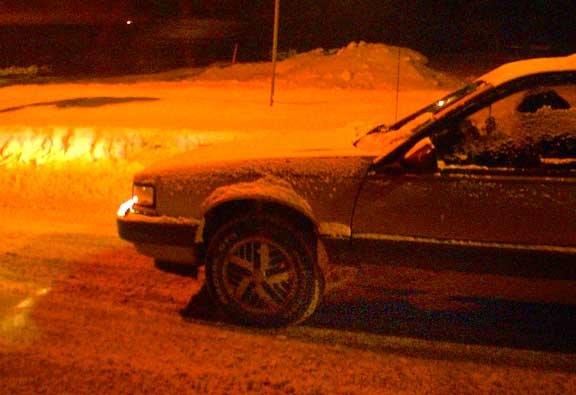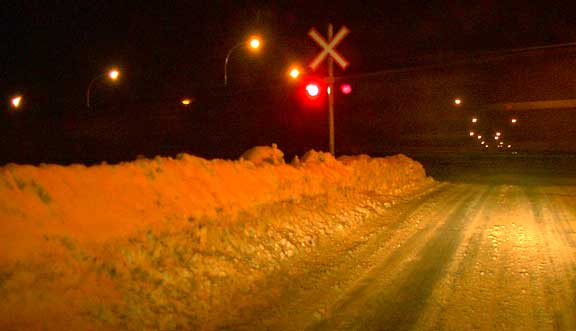|
Regular readers of Ensign will have noted that Ensign did not publish Friday as
we had made the trip home from Winnipeg during Thursday night and Friday was the
day to recover.
A warm ice and snow storm had lashed Southern Saskatchewan this past week and the
aftermath was apparent as we worked our way across the prairies. Yorkton, which
had begun the winter somewhat prematurely with heavy snow continues to get more of
the stuff regularly. These pictures were taken in Yorkton at about 2:00 AM and the
harsh winter conditions in that community are readily apparent with the way this
car looks and the piles of snow along the streets.
The department of highways often describes the way the roads are as "Normal
Winter Driving Conditions" and that sort of covers the subject. Canadians have
to accept that they live in a climate that for most of every year can involve frozen
slippery driving surfaces, impaired visibility from snow and blowing snow, and low
temperatures that can kill if your vehicle fails or you are forces off the road.
All of this is normal. As we travelled from Winnipeg to Tisdale through the night
we were working our way along road that had slippery surfaces, visibility sometimes
was partially impaired and the temperature was between -20 and -18 C, conditions
were normal.
There are several key things to keep in mind and do ahead of the time before you
venture out there and it wouldn't hurt to go over them.
- Don't rely upon highway reports from radio or the department of highways, the
journey and its safety rely upon your capabilities, your vehicle's potential and
the second by second conditions you encounter.
- It is obvious but it needs to be said, make sure your vehicle is in the best
condition it can be in, tire pressure, fluid levels, enough fuel to give you an edge
in case of delay or mishap and working lights, wipers and heating system.
- Fit out your vehicle with the minimum survival equipment, a shovel, sleeping
bag/s, auxillary heat source (candle or sterno), cell phone, severe weather clothing,
signal flairs and matches.
- If the semi units are all parked on a poor weather day, reconsider leaving a
town where they are sitting.
|

